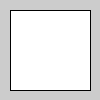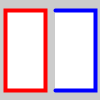begin_closed_shape()#
This method is used to start a custom closed shape.
Examples#

def setup():
py5.translate(50, 50)
with py5.begin_closed_shape():
py5.vertex(-40, -40)
py5.vertex(40, -40)
py5.vertex(40, 40)
py5.vertex(-40, 40)

def setup():
py5.translate(25, 50)
py5.stroke_weight(4)
py5.stroke("#F00")
with py5.begin_closed_shape():
py5.vertex(-20, -40)
py5.vertex(20, -40)
py5.vertex(20, 40)
py5.vertex(-20, 40)
py5.translate(50, 0)
py5.stroke("#00F")
with py5.begin_shape():
py5.vertex(-20, -40)
py5.vertex(20, -40)
py5.vertex(20, 40)
py5.vertex(-20, 40)
Description#
This method is used to start a custom closed shape. This method should only be used as a context manager, as shown in the examples. When used as a context manager, this will ensure that end_shape() always gets called, just like when using begin_shape() as a context manager. The difference is that when exiting, the parameter CLOSE will be passed to end_shape(), connecting the last vertex to the first. This will close the shape. If this method were to be used not as a context manager, it won’t be able to close the shape by making the call to end_shape().
Underlying Processing method: beginShape
Signatures#
begin_closed_shape() -> None
begin_closed_shape(
kind: int, # Either POINTS, LINES, TRIANGLES, TRIANGLE_FAN, TRIANGLE_STRIP, QUADS, or QUAD_STRIP
/,
) -> None
Updated on March 06, 2023 02:49:26am UTC
